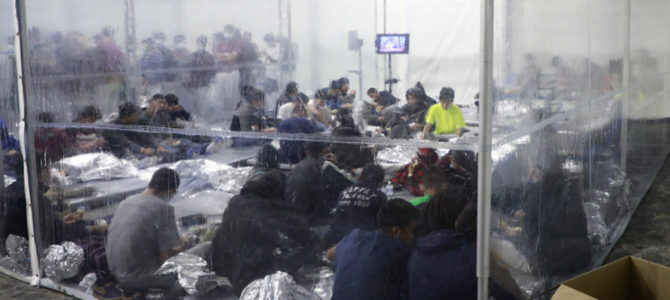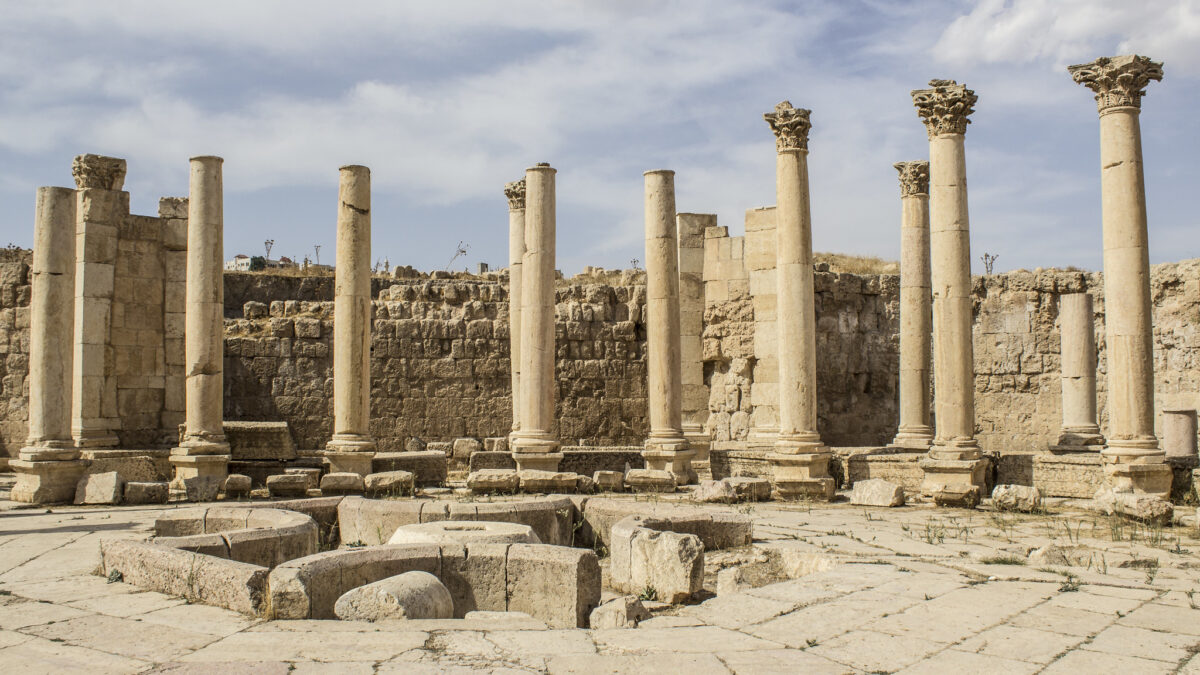
When hundreds of protesters showed up outside a tent facility for migrant youth near the U.S.-Mexico border in Tornillo, Texas, in December 2018, singing and chanting loudly for their release, then-Rep. Beto O’Rourke was among them, microphone in hand, to denounce the Trump administration.
“Let’s continue to show up here,” he said. “We can witness with our own eyes, testify with our own words to our fellow Americans what is going on here.”
Five months earlier outside this same South Texas facility, then-congressional candidate Alexandria Ocasio-Cortez staged an emotional photo op, covering her face in anguish and weeping for the children being held in what the Associated Press later called a “detention camp” in an “isolated corner of the Texas desert.”
Indeed, for Democrats and the corporate press, the Tornillo facility, which at one point housed more than 2,800 migrant teens during the 2019 border crisis, became a symbol of Trump’s supposed malevolence towards migrants and the cruelty of his policies.
The hundreds of white tents and barbed-wire perimeter fencing at Tornillo served as an ideal setting for numerous exposé-style news reports from the border, purporting to show how Trump’s ruthless immigration policies were victimizing vulnerable migrant kids. Every time the Trump administration expanded the facility, the media would meticulously document it.
By the end of January 2019, the federal government was dismantling the tents at Tornillo. The minors housed there were released to parents and relatives living in the United States or transferred to other facilities. Trump’s critics cheered the closure. One immigration activist told the Washington Post that Tornillo had been “a monstrosity of an idea.”
Given all this, you might be surprised to learn that today, under the Biden administration, there are numerous emergency facilities for migrant kids that are far worse than Tornillo, and far bigger.
When President Biden came under fire in March for the humanitarian crisis unfolding at the border, his administration scrambled to transfer the record number of migrant children being held in crude, jail-like facilities run by U.S. Customs and Border Protection, more than 5,700 at one point, into the care of the Department of Health and Human Services. According to federal law, minors aren’t supposed to be held by Border Patrol for more than 72 hours. Many were being held for weeks.
So the administration authorized more than a dozen emergency shelters to be set up by HHS in military bases, convention centers, camps for oil workers, and elsewhere. By the beginning of May, the number of kids being held by CBP had plummeted and the White House boasted of its success.
But all the administration did was hide the problem. Unaccompanied minors are still crossing the border illegally, and still being taken into government custody. The Biden administration is now warehousing nearly 20,000 migrant minors, almost double the highest total in federal custody during the Trump administration, which was 11,400 in May 2019.
But instead of thousands of migrant children packed into tent-like facilities along the border, the Biden administration has dispersed them to tent-like — and wholly inadequate — emergency facilities all across the country, hidden from reporters and cameras thanks to Biden’s media blackout.
Until now. A handful of lawyers authorized to visit these facilities and interview the kids there are speaking to the media about what they’ve seen.
Fort Bliss, a massive military base outside El Paso, Texas, is currently housing about 4,400 minors, and the administration has plans to increase its capacity to 10,000. Half of those, according to a recent report in The New York Times, will be children under the age of 12.
One of the lawyers who has been visiting these emergency shelters, Leecia Welch, told the Times that conditions at Fort Bliss are “much worse in every respect” than Tornillo. The tents reek of body odor, the bedding is not washed regularly, the children do not have clean clothes and “generally describe not feeling cared for and a sense of desperation.”
Welch also visited an emergency shelter set up in a warehouse in Houston that abruptly closed in mid-April because of subpar living conditions. Welch interviewed 16 girls who stayed there, and she told CBS News that they reported being constantly hungry and thirsty, being served undercooked chicken and expired food, and having limited access to showers and laundry. Some said they had only showered twice in 15 days. There were no educational activities, no access to the outdoors, and nothing to do during the day.
At an emergency HHS shelter inside the convention center in Dallas and set to close next week, the situation is similar: there is no access to the outdoors, no exterior windows, and bright fluorescent lights that never turn off. According to a CBS News report, as of the end of April about 300 migrant boys had been there for more than 50 days.
It’s not just Texas. One 10-year-old girl in an HHS emergency shelter in Erie, Pa., told Welch there was no heat in some rooms and not enough clothes for the children. There were gas leaks inside and outside where the kids were living, and the facility was woefully understaffed. It closed on April 26.
None of these places are open to the public, and no media organizations have been granted access to them — a departure from Trump’s policy of allowing broad press coverage of the crisis, including the shelters. So accounts like Welch’s are all we have, for now.









